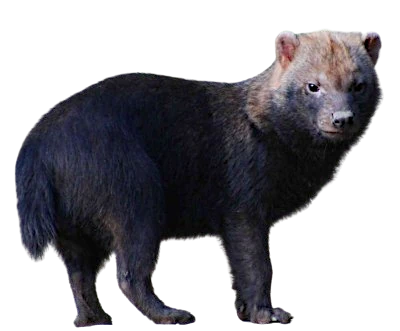
The Bush Dog (Lycaon pictus) is a wild and social canid, primarily found in sub-Saharan Africa. It is famous for its pack hunting and complex social system.
The Bush Dog is medium-sized, measuring between 60 and 75 cm at the shoulder and weighing between 18 and 36 kg. Its coat is typically spotted in various colors ranging from light brown to yellow, with unique patterns that differ from individual to individual. It has large, pointed ears and a bushy tail.
The Bush Dog (Lycaon pictus) belongs to the Canidae family.
The Bush Dog is a close relative of the Wolf and the Coyote, but is distinguished by its social nature and unique hunting behaviors.
The Bush Dog primarily inhabits the savannas and open forests of sub-Saharan Africa. It prefers areas with sparse vegetation, ideal for pack hunting and visual communication.
Bush Dogs are highly social animals, living in groups called packs. These packs are led by a dominant pair and operate cooperatively for hunting, raising young, and protecting their territory. Their social organization is one of the most complex among canids.
The Bush Dog is a carnivorous predator that hunts in packs to capture prey such as gazelles, impalas, and other small mammals. Their hunting technique relies on endurance and coordination.
The Bush Dog is classified as endangered by the IUCN due to habitat loss, hunting, and diseases transmitted by domestic dogs. Conservation efforts are underway to protect its populations, but the species remains vulnerable.
The Bush Dog, also known as the African Bush Dog (Speothos venaticus), belongs to the Canidae family. Its closest genetic cousins include the South American Bush Dog (Atelocynus microtis) and the Bat-eared Fox (Otocyon megalotis). These species share common characteristics, including their adaptation to specific environments and their hunting behaviors.
Watching a Bush Dog in the wild can be a fascinating experience.
By following these tips, you can observe these fascinating predators while respecting their natural space.